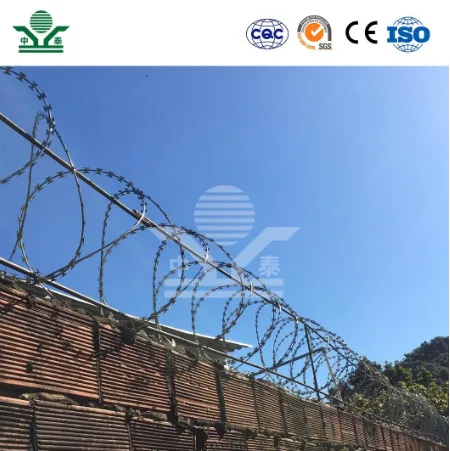Understanding Perforated Stainless Steel Screens Applications and Advantages
Perforated stainless steel screens have emerged as a vital component in various industrial and architectural applications due to their unique properties and versatile use. These screens, characterized by a series of holes punched into a metal sheet, offer a combination of strength, durability, and aesthetic appeal that few other materials can match.
One of the primary advantages of perforated stainless steel is its resistance to corrosion. Stainless steel inherently possesses excellent anti-corrosive properties, making it suitable for use in environments that are subject to moisture or harsh chemicals. By incorporating perforations, manufacturers create screens that not only resist rust and degradation over time but also allow for airflow and light penetration, which can be crucial in certain applications.
In industrial settings, perforated stainless steel screens are frequently utilized for filtration and separation processes. Their ability to filter out particles while allowing liquids or gases to pass through makes them essential in water treatment facilities, food processing plants, and chemical processing. The customization of hole sizes and patterns allows engineers to design screens that meet specific filtration criteria, ensuring maximum efficiency in industrial processes.
perforated stainless steel screen

Architecturally, perforated stainless steel screens have gained popularity for their striking visual appeal. Designers and architects use these screens as cladding or as a functional design element in building facades, sunshades, and decorative partitions. The perforations can be tailored to create unique patterns and designs, allowing for creative expression while also serving practical purposes like reducing solar heat gain and enhancing privacy.
Moreover, the lightweight nature of perforated stainless steel combined with its strength means that it is easy to install and maintain. This aspect is particularly beneficial in construction projects where time and labor costs are a concern. Stainless steel screens can also be easily cleaned, ensuring that their appearance and functionality remain intact over time.
Sustainability is another important aspect of perforated stainless steel. Being recyclable and made from abundant raw materials, it aligns with ecological practices and sustainable design principles. As industries continue to seek environmentally friendly solutions, perforated stainless steel screens present an attractive option that meets both functional requirements and sustainability goals.
In conclusion, perforated stainless steel screens serve a wide range of applications, from industrial filtration systems to architectural design. Their resilience, versatility, and aesthetic qualities make them an invaluable material in many sectors. As industries evolve and demand more innovative materials, the role of perforated stainless steel screens is set to expand even further, solidifying their place as a key player in modern design and engineering.
-
The Best Metal Mesh Solutions: Expanded Aluminum Metal vs. Expanded Stainless Steel Metal
NewsSep.10,2024
-
Round Perforated Sheets vs. Hexagonal Perforated Sheets vs. Embossed Perforated Sheet Metal
NewsSep.10,2024
-
Perforated Metal Sheets
NewsSep.10,2024
-
Experience The Excellence Of Stainless Steel Grating
NewsSep.10,2024
-
Discover the Versatility Of Metal Mesh Expanded Forming Machines
NewsSep.10,2024
-
Discover The Advantages Of Steel Grating For Sale
NewsSep.10,2024
Subscribe now!
Stay up to date with the latest on Fry Steeland industry news.

